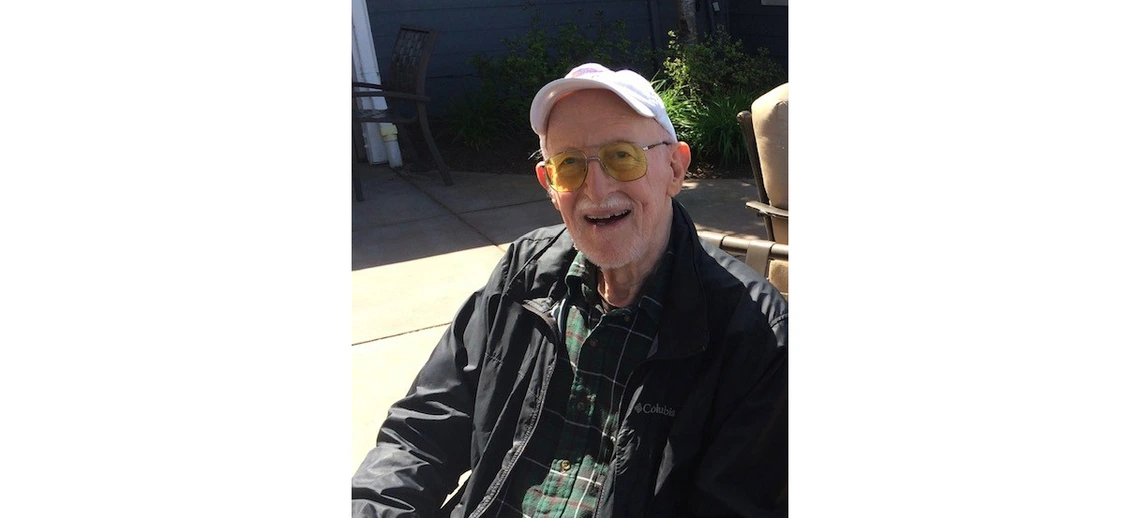CHEE’s First Faculty: Bob Damon

Bob Damon was Don White's first hire when White formed the University of Arizona Department of Chemical Engineering in 1958. Damon, now 88 years old, guided several dozen undergraduates during the department's early years.
Damon arrived in Tucson on New Year's Day in 1959, and taught unit operations during his first semester in the department. He was impressed with the students' eagerness to learn the fundamentals.
"In those days there were no handheld calculators, minicomputers or chemical engineering applications," said Damon. "We used slide rules for calculations, a handbook for properties of materials and energy, and nomograms (pictorial representations of complex mathematical formulas) for applications."
He loved teaching and found meaning working with others to develop the curriculum and help the department grow.
A "Beyond Cool" Professor
Marylyn Schumann Tobey, a 1961 chemical engineering graduate, remembers Damon's ability to explain and teach in a clear, simple and practical way.
"I was totally lost in physical chemistry thermodynamics, but when I took his thermo class the next year, it just all came together," she said. "I got an A in that class, which was a marvel after my performance in p-chem."
Dick DeSchutter, who received his BS in chemical engineering in 1963 and MS in 1965, also vividly recalls his 7:40 a.m. thermodynamics with Damon. He said between the subject matter and rising at dawn, it was brutal, but Damon was a terrific professor.
"Dr. Damon was beyond cool, with comments like 'Fugacity is probably not top of mind right now, so try to remember to bring coffee to the next class,'" said DeSchutter. "Fugacity still remains a mystery, but I think he finally got through to me on entropy."
Close Faculty-Student Interaction in Early Days
Joe Flanagan received his chemical engineering BS, MS and PhD in 1962, 1963 and 1968, respectively. According to Damon, Flanagan was the first student to receive a graduate degree from the department.
Faculty-student interaction was deep in 1961, when the ratio of graduating seniors to faculty was 7:4. Today about 80 students per year attain BS degrees in chemical engineering, and the department has 21 faculty.
"Damon and Edwards were 'interactive' outside the classroom in that they would go golfing, dove hunting and have a few beers with the students, despite the fact that 144 and not 128 units (as they are now) were required to graduate," said Flanagan.
Damon remembers coffee breaks with students in the Student Union.
"There I discovered Southwest cuisine, and I have fond memories of beef enchiladas and chili sauce," he said.
Damon and his wife, Faith, extended their support well beyond the classroom. They helped Flanagan and his wife, Linda, find good medical care during Linda's first pregnancy. Damon also helped Flanagan avoid graduate student poverty by securing Linda a part-time job with the Pima County Health Department.
Flanagan's thesis research required the use of high temperature/high pressure hydrogen gas and could only be done at night when there was no one else in the unit operations area.
"The research was extremely hazardous, and Dr. Damon was often my standby assistant," said Flanagan.
From Montana to Arizona to Washington State
Damon and his wife were raised in northwest Montana. They both earned BS degrees from Montana State University, where Damon also completed his PhD.
He taught at the University of Arizona from 1958 to 1963, spending the rest of his career with Crown Zellerbach Corporation in Camas, Washington. There, he headed up their engineering department, built a new dimethyl sulfoxide plant, and worked with other pulp-related topics. In his spare time, Damon taught part-time at Lewis & Clark College in Portland, Oregon.
In his earlier days, Bob was an avid hunter and fisherman. Today he and his wife enjoy their retirement in Vancouver, Washington, at a home overlooking the Columbia River.
